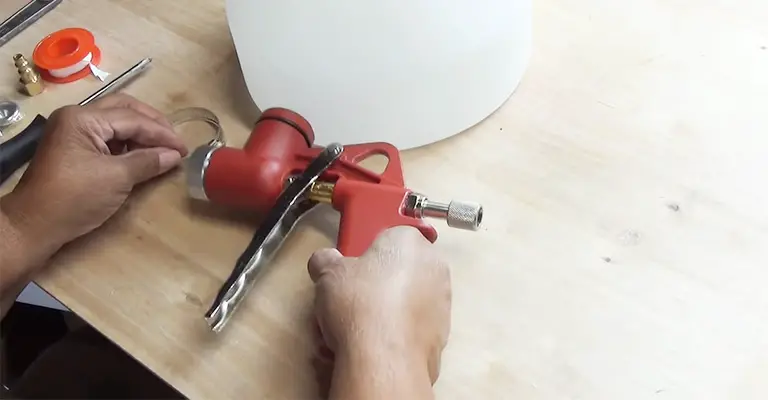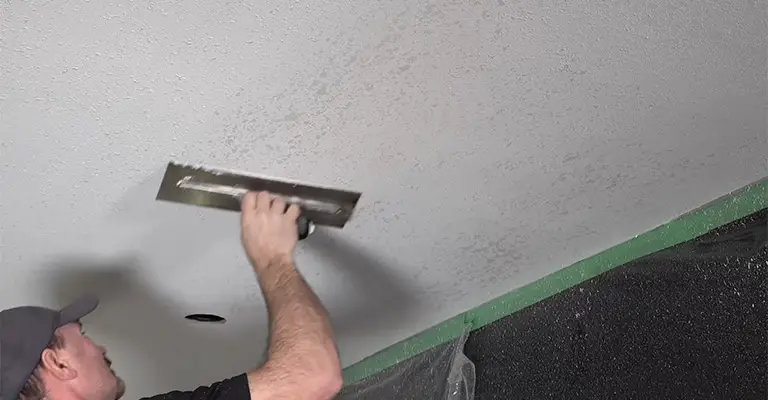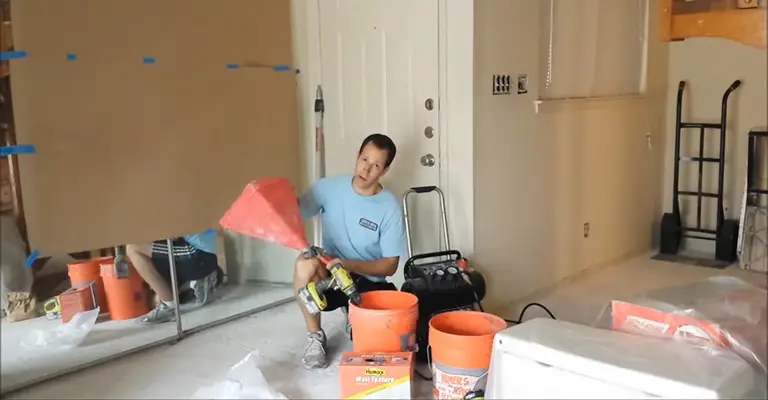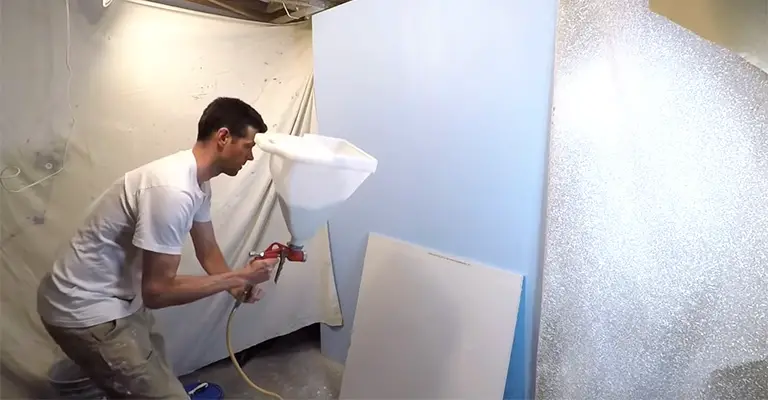Spraying texture on walls and ceilings is a standard method for adding a decorative touch to any room.
It involves using a hopper gun to shoot drywall mud or texture material through a nozzle, creating a textured pattern on the surface.
Air pressure is one of the most critical factors in achieving a successful texture spray. To produce a consistent and even spray pattern, you need to have the right air pressure.
Whether you are a professional contractor or a DIY enthusiast, understanding the proper air pressure for texture spraying will help you achieve your desired results.
This article will explore how much air pressure is needed to spray texture and the factors affecting the required pressure.
It is recommended that you use a continuous-flow air supply system to minimize time spent on texture spraying and ensure the consistency of the pattern.
This system supplies high CFM air at a lower pressure (below 50PSI) throughout the job, thereby reducing the time needed for texture spraying.
How Much Air Pressure Do You Need To Spray Texture?

It is important to note that the air pressure required to spray texture will vary based on several factors, including the texture material you use, the nozzle size, and the texture pattern you want to achieve.
Pressure between 40 and 60 PSI (pounds per square inch) is recommended for most texture spraying applications.
It’s always a good idea to consult the manufacturer’s instructions or product specifications for recommendations specific to certain texture materials.
Ensuring Proper Pressure For Spray Texturing Apparatus
Spraying texture on ceilings and walls is best achieved by running the sprayer at the lowest possible pressure.
I cannot provide a specific pressure requirement since this will vary depending on the piece of equipment used and the thickness of the texture, and it changes almost every time a batch is mixed.
Using one size fits all air pressure for texture guns is impossible. The compressor you use has a regulator. Test the spray by setting the pressure to 70 PSI at the start.
Make sure the spray pressure is as low as possible for the material being sprayed and that it gives a good coating.
To give yourself a safety margin for thicker texture in the same batch if it is not fully mixed, raise your spray pressure by 5 PSI once you have reached the lowest pressure where your spray gives you the texture you want.
You can save energy by compressing air more efficiently as pressure won’t be wasted when the air supply is set up this way, allowing the compressor to cycle less frequently and use less energy.
How To Get Consistent Drywall Texture Finishes?

Surfaces with textured drywall are becoming increasingly popular in new construction and remodeling. Today, wall texturing is not just limited to ceilings; it is also applied to various interior surfaces, including walls.
A textured finish not only adds a specific look to walls but also hides blemishes and facilitates wall repair.
To achieve a consistent texture finish, a consistent texture must be applied across all surfaces. Matching an existing texture finish is especially important when remodeling or repairing small or medium-sized spaces.
Knockdown, Orange Peel, and Popcorn finishes are the most common textures.
It is based on three main elements that you achieve a consistent pattern once you understand the characteristics of a particular finish:
- Material Consistency
- Air Pressure Consistency
- Application Technique
Uniform Material Consistency

For a consistent texture finish, uniform material consistency throughout the application is necessary. Two types of joint compounds are available for all-purpose use (drywall mud):
- Dry powder in bags – must be mixed with water
- Ready-mixed in buckets or boxes – requires thinning with water
After selecting a textured finish, knowing how to mix drywall mud for texture spraying is essential. Either dry powder or ready-mix texture material must be mixed with appropriate water.
- With a gravity-fed hopper, you’ll get the best flow possible
- Ensure that a specific texture pattern is achieved
Mixing it all at once is the best way to ensure consistent mud on jobs requiring more than five gallons of material.
The batches should be mixed and compared until they are the same. It will help make the mixture uniform and help avoid “recreating” the original consistency by combining portions of each mixed batch.
Adding air to a gravity-fed hopper gun can also cause the mud to set, affecting material consistency.
To prevent mud from setting up, use a pressurized-hopper gun that has a sealed hopper for small to medium-sized texture jobs.
Additional pressure also improves efficiency and helps protect the material farther from the gun so that hard-to-reach surfaces, such as high ceilings, are consistently coated.
Consistent Air Pressure

There is a direct relationship between the amount of material and air mixed in a texture sprayer.
More air is needed for the drywall mud to break up into smaller pieces as the pattern gets finer. Due to the smallest material form, texture finishes such as Orange Peel and Fogging require the most air.
To apply a texture with a hopper gun, you need an air compressor, and not all compressors are suitable. Through the entire hopper of material, low, consistent air pressure is essential.
It is common for portable electric air compressors to use small tanks to build up pressure before they are used.
Compressors like these are ideal for tools that require short blasts of high pressure, such as nail guns. This allows time for the tank to recharge.
The pressure in the tank needs to build up again before spraying texture finishes with these compressors. Sometimes, this extra time may double or triple the time spent on the job, depending on the project’s complexity.
When the air pressure drops enough to impact the texture, it can also be challenging to identify the tipping point.
Application Technique: Consistent Chaos
Inexperienced observers may perceive texture application as chaotic chaos.
However, applying texture to a surface in a consistent pattern requires understanding how the material is being applied to guide minor adjustments.
It is possible to call professionals who produce consistent finishes in a short amount of time “artists.” To improve results, you need to spend some time trying out different methods.
Final Words
To achieve a consistent texture finish, make sure the hopper gun and air supply system are best suited to texture applications based on your experience.
It’s important to note that too much air pressure can result in a spluttery, uneven spray pattern, while too little air pressure can cause the texture material to clog the nozzle or produce a weak spray.
To achieve the best results, it’s recommended to start with lower pressure and gradually increase it until you gain the desired texture pattern.
Additionally, using a pressure regulator can help you maintain consistent air pressure and avoid any pressure fluctuations during the spraying process.






